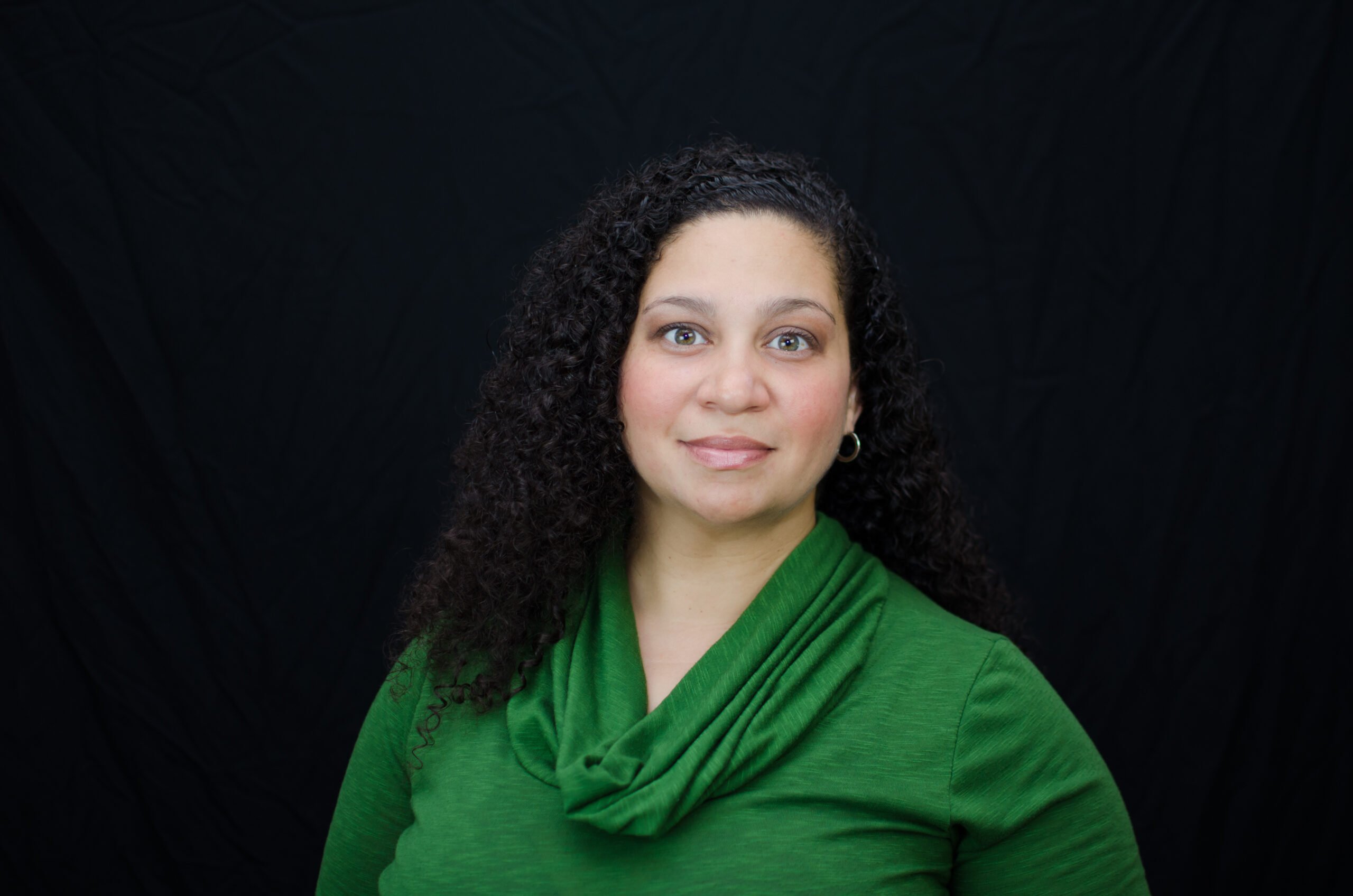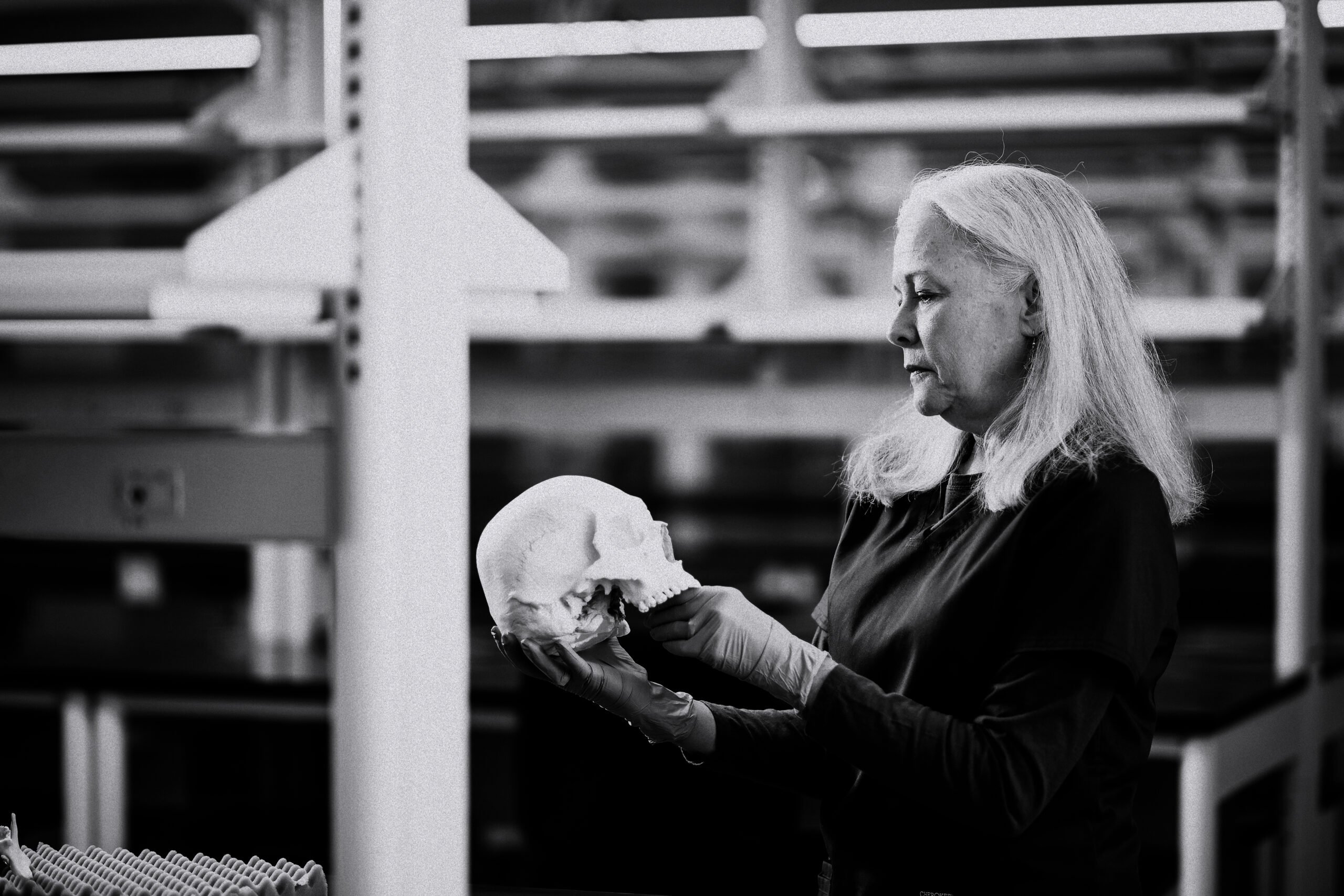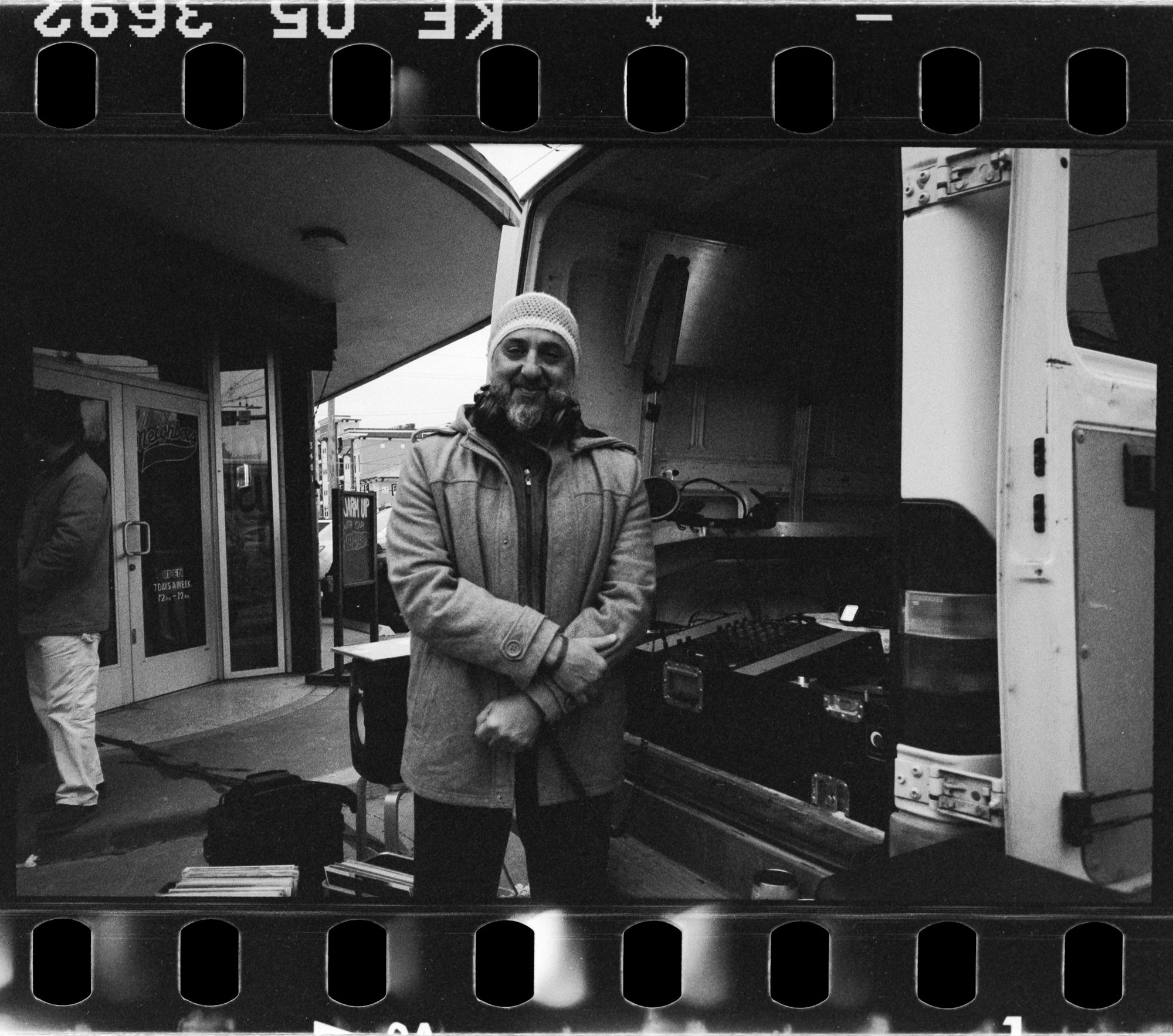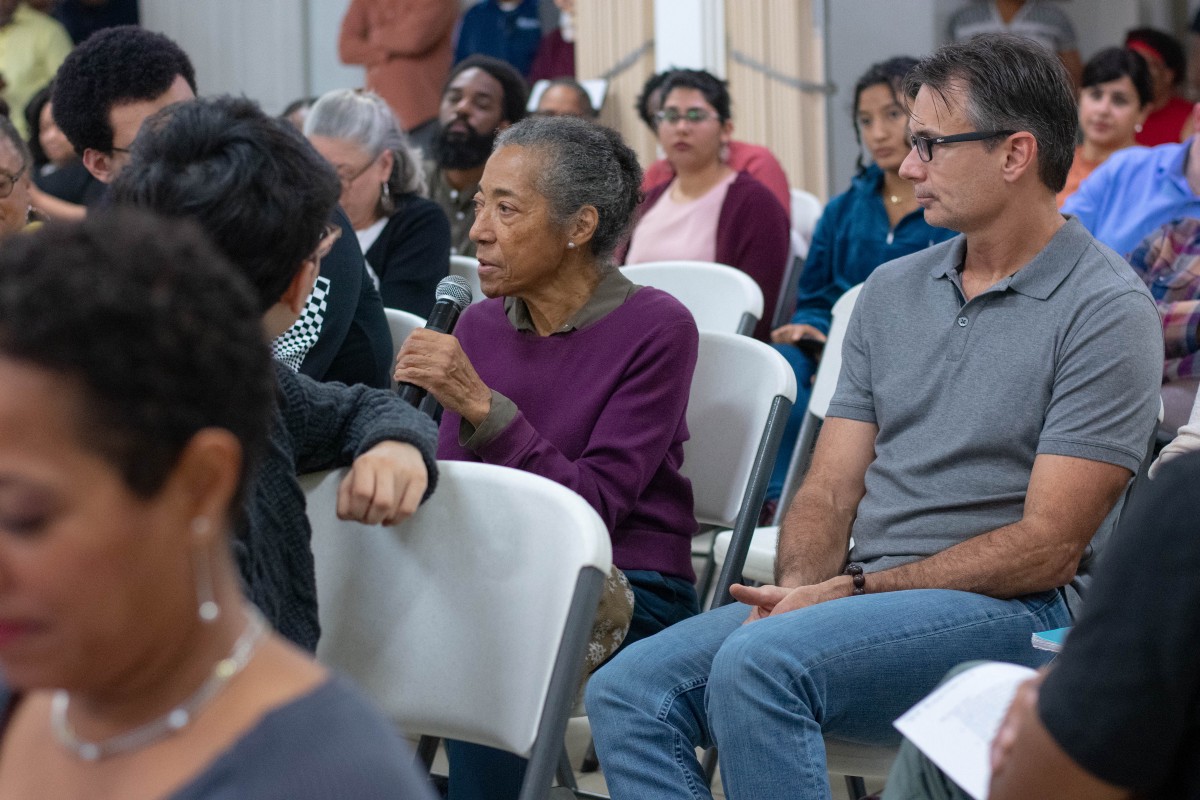
In Houston’s Third Ward, Community Groups are Fighting for Equitable Development
The Third Ward has a long history of displacement. Community members want a seat at the table.
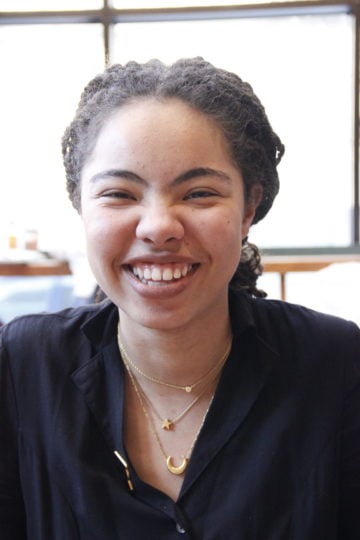
At churches across Houston’s Third Ward, Vacation Bible School is a ritual of summer. Between lessons, music often peals out of the windows as children gather for games and food. The adults who supervise them laugh and gossip. For Dolores Rodgers, who grew up in the Third Ward, it was practically an extension of home—while she was growing up in the ’60s, her family lived next to Jerusalem Baptist Church on Tuam Street where she attended VBS. But Rodgers’ family no longer calls the house on Tuam home. A few years ago, the City of Houston claimed the land to build a parking lot.
Rodgers’ family, like many families with roots in the historically Black Third Ward, is no stranger to displacement. Her grandparents were displaced by the construction of Highway 288 in the early ’60s. She left the neighborhood to go to college in the late ’70s, but when she came back, she noticed the slow losses, the disappearance of independent businesses like barber shops and grocery stores. Still, she wanted to make a home in the Third Ward.
“It was just part of my identity as a person,” Rodgers said.
Today, she’s a member of the negotiation team for the Houston Coalition for Equitable Development Without Displacement (HCEDD). The coalition, which consists of residents and their allies along with 29 area organizations, is asking the Rice Management Corporation (RMC) and the City of Houston for a Community Benefits Agreement. A CBA is a legally binding, project‐specific contract between developers or cities and community coalitions that helps communities remain in control of developments in their neighborhood. Third Ward residents want a say in the latest change bordering the neighborhood, the new Rice Ion building.
RMC owns the Rice Ion, a new “innovation hub” scheduled to open in early 2021. Rodgers found out about the Ion’s construction late last summer when fences started going up around the old Sears Building the Ion now inhabits just across the freeway from the Rodgers’s old house. Though no homes will be demolished by the construction of the Ion, housing justice advocates and residents are worried that the development will both increase taxes of properties in the area and attract new developments to the area that could displace people.
“What we’re going to see is that people that are already being priced out of their neighborhoods are going to continue to be priced out,” says Zoe Middleton, the southeast director for Texas Housers, a housing advocacy group. “And that being priced out might actually be accelerated.”
Rodgers attests that rising property taxes are one of the few things that could cause her to leave the Third Ward today. One of her cousins has already had to sell their house for that reason.
“Once you get to the retirement age, it becomes very difficult to maintain even a modest home in the area,” Rodgers says.
RMC is a new player on the Houston development scene—their primary mission is the management of the university’s $6.5 billion endowment. The Ion’s website offers a number of lofty jargon-filled goals like “convening an inclusive, interdisciplinary and collaborative community that positively impacts lives through technology, innovation and entrepreneurship.” If you skip to the leasing page, they offer 300,000 square feet of office, restaurant, academic, and event space, as well as 100,000 square feet of “public and shared spaces for events and programming.” The glass-curtain-walled building visually distinguishes the more gentrified Midtown from old houses like Rodgers’s in the Third Ward on the other side of the freeway.
The City of Houston and Rice have positioned the Ion as the anchor of a new 16-acre Innovation District. They’ve promised community members that they will provide job training and contract minority-owned businesses—without any published concrete plans or goals to achieve these promises. Though Mayor Sylvester Turner has publicly praised the Ion’s potential to attract investment, particularly in the tech sectors, to Houston, residents like Rodgers wonder whether the community’s interests in cultural preservation and job creation for long-term Third Ward residents will be honored. If the Ion doesn’t employ Third Ward residents for the jobs it creates, it could attract new residents to the neighborhood who could afford the increased property taxes and displace historic residents without demolishing a single home.
“The avenues for equitable access just aren’t there,” says Curtis Davis, who serves on the steering committee for the Northern Third Ward Neighborhood Implementation Project. “It’s kind of like a body that has blood vessels that connect to the various organs. And this particular organ doesn’t have very good connections. And so that heartbeat, that red blood and oxygen and whatnot, which serves many of the other organs of the body, don’t serve this particular organ very well.”
“The avenues for equitable access just aren’t there.”
After a summer of protest demanding investment in Black communities instead of the police, their calls for transparency and commitment are echoed nationwide. During a coalition community meeting over Zoom, sociologist and third generation Third Ward resident Assata Richards made connections to the police murder of the Third Ward’s own George Floyd.
“The reason he ended up in a place so far from home was because he couldn’t get access to the opportunities he needed,” Richards said. “So many George Floyds are being pushed out.”
*
Though the Third Ward didn’t become predominantly Black until after World War II, the neighborhood’s Black roots date back to Reconstruction. In 1872, a group of church communities led by Reverend Jack Yates, a Baptist minister, pooled $1,000 to buy 10 acres of open land for their Juneteenth celebration. In honor of their freedom, they named it Emancipation Park. Rodgers’ family’s former home looked out on the baseball field.
Institutions established in the Third Ward served Houston’s Black community when no one else would. Texas Southern University, a historically Black university, was established in 1947, during segregation. When Jack Yates Senior High School opened its doors in 1926, it was only the second school for Black children in the city of Houston. In the late 1960s and ’70s, integration meant that wealthier Black families could move out of the Third Ward and into the suburbs. In the years that followed, the city disinvested from the neighborhood. By the early 2000s, developers seized the opportunity to buy cheap property. Gentrification had begun.
In some parts of the neighborhood today, luxury townhouses dwarf older homes and vacant lots. But housing is just one piece of the puzzle. The fight against displacement and for revitalization is a patchwork of community groups, nonprofits, and tax-reinvestment zones, including the coalition fighting for a CBA.
Many of the coalition’s concerns are grounded in the 2019 Third Ward Needs Assessment, co-authored by researchers at the Baker Institute at Rice University and the Sankofa Research Institute, a community-centered research institute. Richards heads Sankofa, which recruited and trained members of the Third Ward as co-researchers for the needs assessment, providing them with tools and mentorship in both research skills and community engagement. Their survey found that most residents had lived in the Third Ward for over 15 years and had little desire to move away. The report also noted high levels of “collective efficacy,” which measures cohesion among neighbors and with their willingness to work towards the common good.
“We are structurally dependent and interdependent on other people. And that’s what the Third Ward has been.”
“For many of us, we don’t by ourselves have individual resources to meet all our needs,” Richards says. “We are structurally dependent and interdependent on other people. And that’s what the Third Ward has been.”
The needs assessment also reported many residents’ fear of displacement. Almost one-third of residents said they were worried about having to move within the next year, and a majority were “extremely concerned” about a loss of African American culture in the Third Ward. Though sometimes fears of gentrification are positioned against development, residents also noted a desire for new hospitals, childcare facilities, restaurants, and movie theaters. For Richards, the CBA provides an avenue to align the new development with the documented needs of Third Ward residents.
“You cannot say you’re supporting the community and not hold yourself accountable to what that support looks like,” she says. “Now, you have an assessment of that. It’s easy to talk in the abstract about supporting the community.”
*
In late September and early October, RMC hosted workshops for community members on job training, housing, and hiring opportunities. Because of the pandemic, what would have been a normal community meeting migrated online, disrupting the feedback process. The RMC workshops were hosted on Zoom in the webinar format, which prevents participants from seeing how many people are watching. They also disabled the chat feature, filtering questions through the Q&A function, which keeps non-panelists from seeing what questions are being asked until they get answered, if they get answered at all.
“It’s felt like old-school politics around how developers come into the area,” Rodgers says. “And they really do not want to engage the community. They just want to go through the motions to say, I’ve checked this box off.”
Sam Dike, the director of strategic initiatives at RMC, says the workshops were an opportunity to educate community members about the innovation district and the potential opportunities, as well as a time for the community to give feedback to shape a Community Benefits Agreement.
Dike points to RMC’s partnership with nonprofit Brighter Bites as an example of their commitment to action. After Fiesta, a regional grocery store that sat at the western edge of the Third Ward, closed in July, RMC partnered with the nonprofit to distribute 100,000 pounds of fresh produce to 375 underserved families in the Third Ward during the school year.
An HEB that opened in December 2020 also sits on the outskirts of the neighborhood, straddling the Third Ward and the more affluent Museum District. But even prior to the Fiesta’s closing, the Third Ward was classified as a food desert by the U.S. Department of Agriculture. And as Richards pointed out during a September coalition meeting, working class residents have different access needs than middle class residents, and some of the other services like money orders that the Fiesta provided have not been restored.

In the meantime, the coalition has hosted Zoom community meetings of their own. All who participate are invited to introduce themselves and say why they’re attending the meeting.
Over the course of the fall, tensions have risen between organizers, the city, and Rice. Developers claim to be negotiating a CBA, but have moved forward without input from the coalition. The coalition elected an eight-member negotiation team that met with Dike along with public relations and legal representatives from RMC in early November. After the meeting, Dike offered a letter outlining RMC’s position on the CBA and invited four coalition members to be part of a CBA working group alongside other stakeholders. Though coalition members were pleased that RMC responded in writing, they saw this as a divisive tactic. “They are trying to define who speaks for the Third Ward,” Rodgers said in a debrief meeting. “We cannot let them displace the coalition.”
While the coalition decides next steps with RMC, they are taking their demands to the Midtown Tax Increment Reinvestment Zone, a public district that uses property tax revenue in Midtown Houston for redevelopment projects. RMC has requested $75 million in public funds from the district, which the coalition believes should be conditional on the signing of a CBA between the coalition and RMC.
The stakes are sky high for Third Ward residents who feel they’ve been down this road before. Houston’s Black community has already seen a version of this happen with the gentrification of Freedmen’s Town. For long-term residents like Dolores Rodgers, the fight for a CBA is a fight for a chance to continue to call the place where their grandparents lived, where their parents lived, and where they hope to live out the rest of their lives, home.
“We can ensure that this community just doesn’t become a community of people who are rich just because they can afford property and take advantage of individuals who have no resources to fight back,” Rodgers says. “And so I just pray that the assault on communities of color will stop with this project.”
Read more from the Observer:
-
Bringing the Dead Home: Thirty years after Congress passed the Native American Graves Protection and Repatriation Act, only a fraction of human remains held by Texas’ museums and universities have been returned.
-
How We Got Here: Texas’ health system has been underfunded, understaffed, and unprepared for years. Here, COVID-19 found the perfect place to spread.
-
Local Organizers Explain the Republican Surge in South Texas: Democrats have long taken Latino voters for granted, while Republicans have worked to fill that organizing void.
